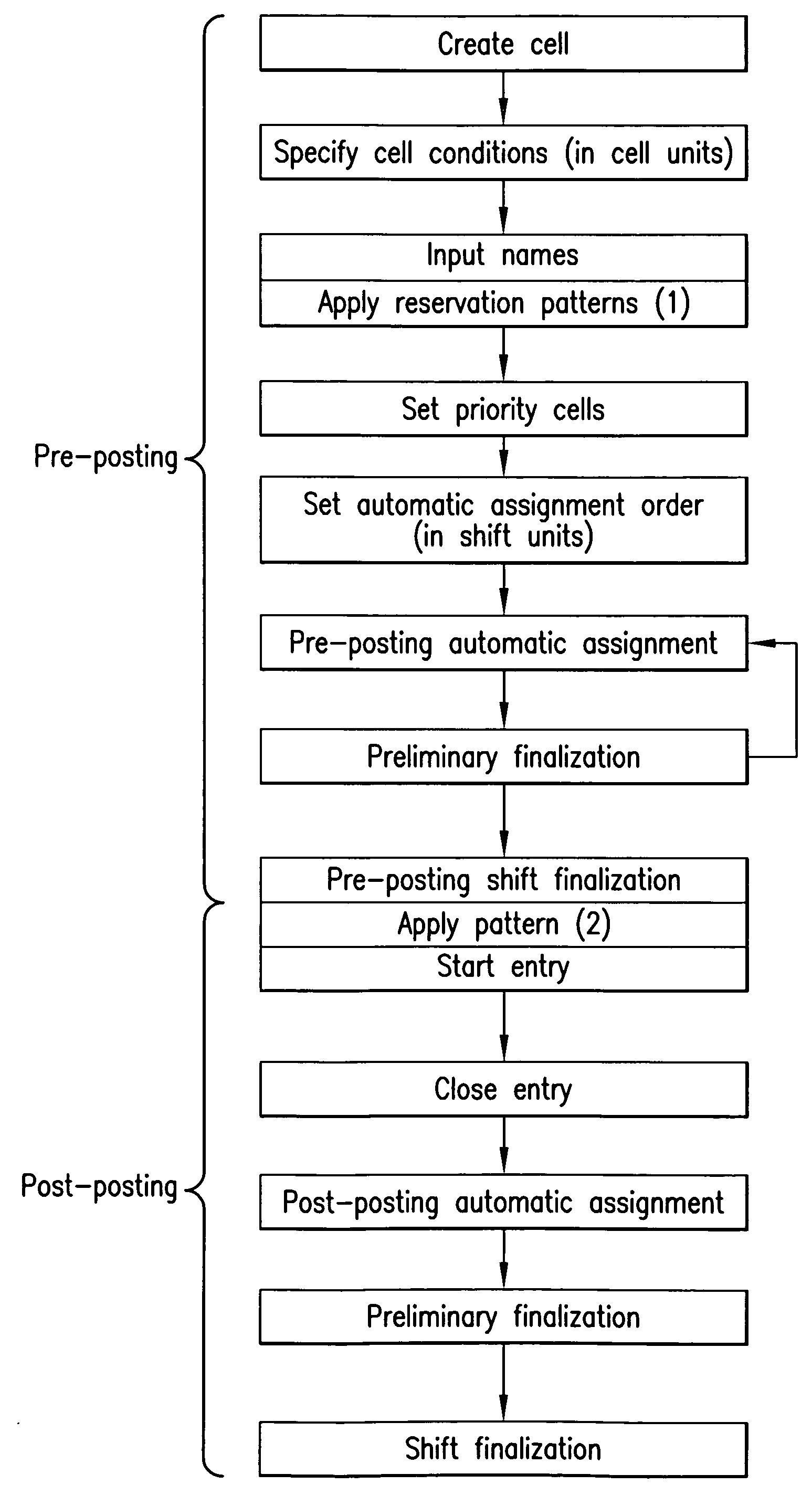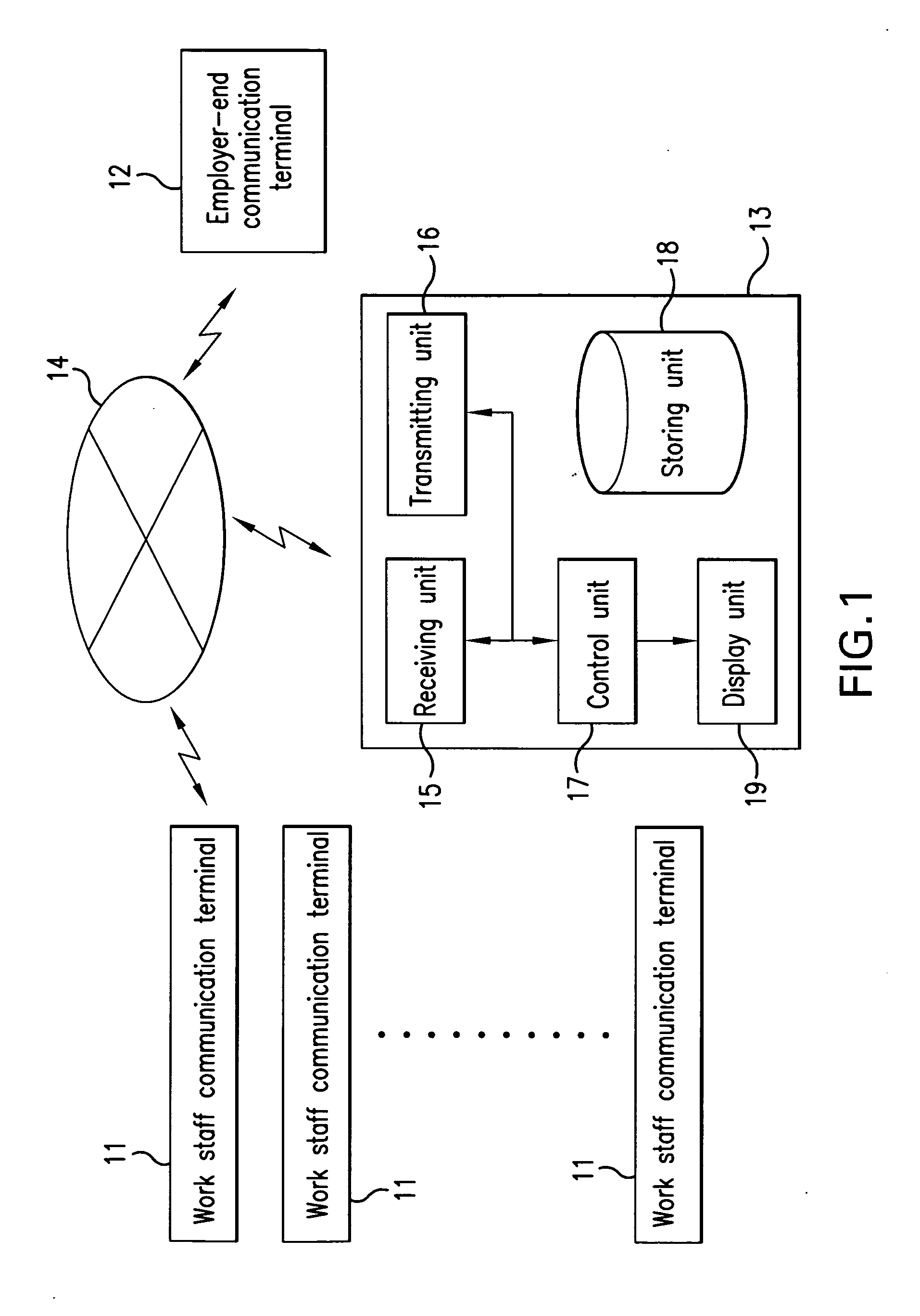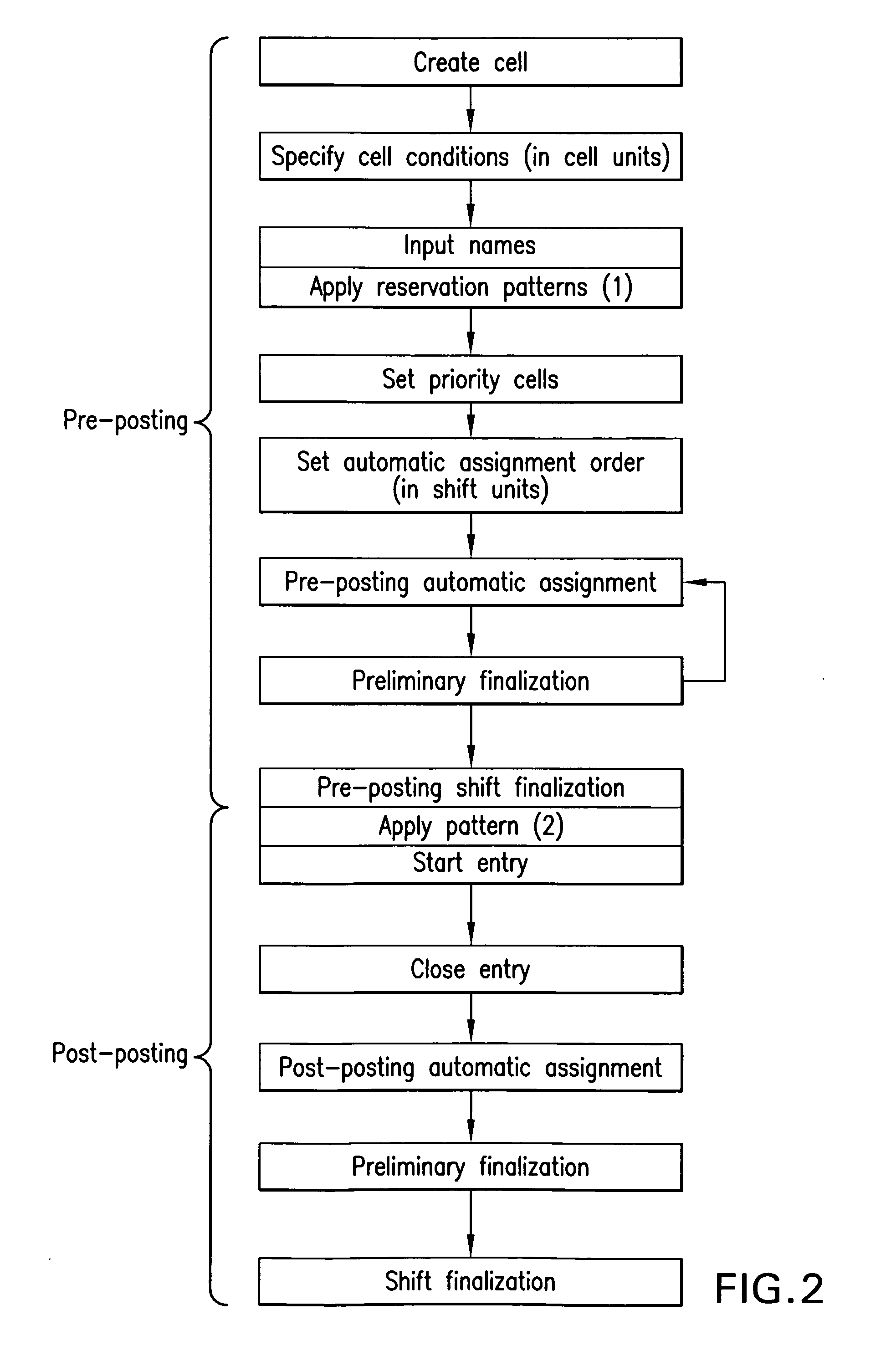Career development system
a career development and system technology, applied in the field of career development systems, can solve the problems of inability to solve the above problems, two-fold loss, and difficulty in considering such workers as positive company assets, and achieve the effect of improving job awareness and boosting competitive strength
- Summary
- Abstract
- Description
- Claims
- Application Information
AI Technical Summary
Benefits of technology
Problems solved by technology
Method used
Image
Examples
embodiment 1
[0150]FIGS. 23A and 23B are methods for assigning starting from cells having a small number of reservations. Note that with cells having the same number of reservations, assignments will be starting with cells with earlier priority (in the alphabetic order of the letters and numbers assigned to the cells). Namely, assignment is performed in the order of the circled numbers, (2)→(1)→(4)→(3)→(5).
[0151]FIG. 23A (1) shows the state after a reservation deadline, and in the cells the number of persons reserved and the reserved staff can be viewed as a list. Automatic assignment is performed in accordance with the above rules. First in the cell I reservation list, there are reservations for three people, staff members A, B and C, and in the assignment flow of FIG. 21 persons with the highest evaluation are assigned. In this example, staff A is assigned. (FIG. 23A (2)). At the same time, staff B is assigned to cell II (FIG. 23A (3)), staff C to cell III (FIG. 23B (1)), staff D to cell IV (F...
embodiment 2
[0152]FIG. 24 shows automatic assignment such that assignment of reserved persons to cells based on priority order among cells and on staff priority order has been prioritized (rule application where empty cells are not made). The figure shows one simulation where with respect to the persons applying for each cell, the same number of persons are assigned, the priority order among cells and staff priority order are lined up, assignments of reserved persons to cells are made in order and decided.
[0153]Next, evaluations for attendance will be explained. FIG. 25 shows an example of attendance evaluation, and the horizontal axis indicates evaluation points and the lateral axis indicates time. In this example evaluation, evaluations are made in five stages on the time axis, “provisionally finalized”, “prior day confirmation”, “same day confirmation”“work start”, “work end”. From shift confirmation of step 16 in FIG. 19A, a “1” is assigned to staff who complied with a shift change in place...
PUM
 Login to View More
Login to View More Abstract
Description
Claims
Application Information
 Login to View More
Login to View More - R&D
- Intellectual Property
- Life Sciences
- Materials
- Tech Scout
- Unparalleled Data Quality
- Higher Quality Content
- 60% Fewer Hallucinations
Browse by: Latest US Patents, China's latest patents, Technical Efficacy Thesaurus, Application Domain, Technology Topic, Popular Technical Reports.
© 2025 PatSnap. All rights reserved.Legal|Privacy policy|Modern Slavery Act Transparency Statement|Sitemap|About US| Contact US: help@patsnap.com



